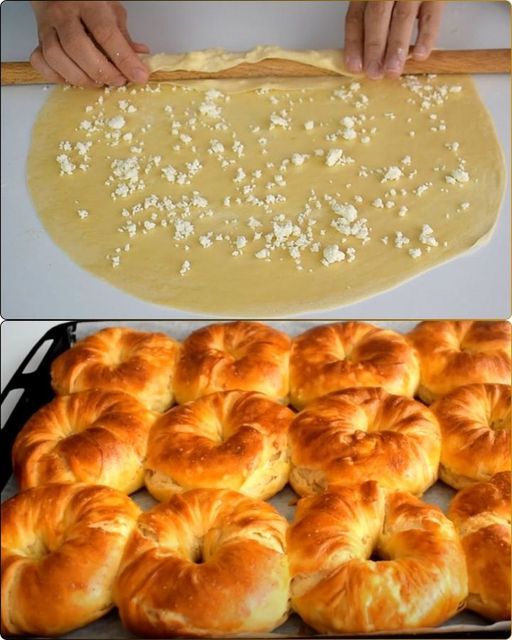
The Rich Tradition of Hungarian Doughnuts: Szalagos Fánk
Hungarian cuisine is known for its hearty, flavorful dishes, but when it comes to desserts, one of the standout treats that holds a special place in the hearts of Hungarians is szalagos fánk, or Hungarian doughnuts. These doughnuts are not only delicious but also deeply rooted in the country’s cultural history and traditions. Whether they are served during the holidays, at fairs, or as a sweet snack to accompany a cup of coffee, Hungarian doughnuts are a beloved symbol of Hungarian hospitality and indulgence. This article will delve into the origins, the ingredients, and the traditional recipe for making Hungarian doughnuts, along with the cultural significance behind them.
Origins and Cultural Significance
The origins of Hungarian doughnuts, like many traditional dishes, are a blend of local and international influences. The recipe for szalagos fánk is thought to have evolved over centuries, with the earliest records of fried dough pastries appearing in Hungary as early as the 18th century. While Hungary has its own unique take on doughnuts, the concept of frying sweet dough is shared across many cultures. It’s no surprise that these doughnuts have become a staple in Hungarian cuisine, as they combine the rich flavors of fried dough with the sweetness of sugar, creating a perfect indulgence.
Hungarians often associate szalagos fánk with the celebration of Fasching, which is the pre-Lenten carnival season. During this time, families and communities gather to enjoy traditional foods, including the beloved doughnuts. These doughnuts, with their crispy exteriors and soft, pillowy interiors, are typically enjoyed with a dusting of powdered sugar or filled with sweet jam or cream.
Hungarians also serve szalagos fánk on special occasions such as Christmas, New Year’s Eve, and weddings. It’s not uncommon to find these doughnuts at festive events, where they are often prepared in large quantities and served in platters to share with friends and family. The preparation of szalagos fánk can be a social activity, often passed down through generations, with grandparents teaching children how to fry and serve these delectable treats.
The Ingredients: Simple Yet Flavorful
One of the reasons Hungarian doughnuts are so beloved is because of their simplicity. The ingredients are basic, but when combined, they create something truly special. Here’s a breakdown of the key ingredients that go into making szalagos fánk:
- Flour: All-purpose flour is the primary base of the dough. It provides the structure for the doughnuts and is essential for achieving that perfect texture—fluffy on the inside and crisp on the outside.
- Yeast: The yeast is what gives the doughnuts their signature rise and airy texture. Active dry yeast is typically used, although instant yeast can be substituted in some recipes.
- Sugar: Sugar serves as both a sweetener in the dough and as a coating once the doughnuts are fried. The doughnut’s sweetness comes from the sugar in the dough and the powdered sugar dusted over the top after frying.
- Milk: Warm milk is used to activate the yeast and provide moisture to the dough, ensuring it is soft and tender.
- Eggs: Eggs enrich the dough and contribute to its soft, pillowy texture. They also help in binding the ingredients together.
- Butter: Melted butter adds richness and flavor to the dough, making it taste luxurious and indulgent.
- Vanilla Extract: For an aromatic touch, vanilla extract is added to the dough, infusing it with a subtle, sweet fragrance that complements the doughnut’s flavor.
- Salt: A pinch of salt enhances the other flavors and balances the sweetness.
For frying, vegetable oil or sunflower oil is typically used. The oil needs to be heated to the right temperature to achieve that golden brown color and crispy texture without making the doughnuts greasy.
While the basic recipe calls for just these ingredients, Hungarian doughnuts can also be filled with various fillings, including jam, chocolate spread, or vanilla cream, giving them a rich, indulgent flavor profile. Powdered sugar is commonly used to dust the finished doughnuts, but some variations include a glaze or cinnamon-sugar coating.
Step-by-Step Recipe for Hungarian Doughnuts
Making szalagos fánk at home requires patience and attention to detail, but the results are worth the effort. Below is a simple recipe you can follow to create these delectable treats in your own kitchen.
Ingredients:
- 2 cups all-purpose flour
- 1/2 cup warm milk
- 1/4 cup sugar
- 2 1/4 teaspoons active dry yeast (1 packet)
- 2 eggs
- 1/4 cup butter, melted
- 1 teaspoon vanilla extract
- 1/2 teaspoon salt
- Vegetable oil, for frying
- Powdered sugar, for dusting
- Optional: Jam or chocolate spread for filling